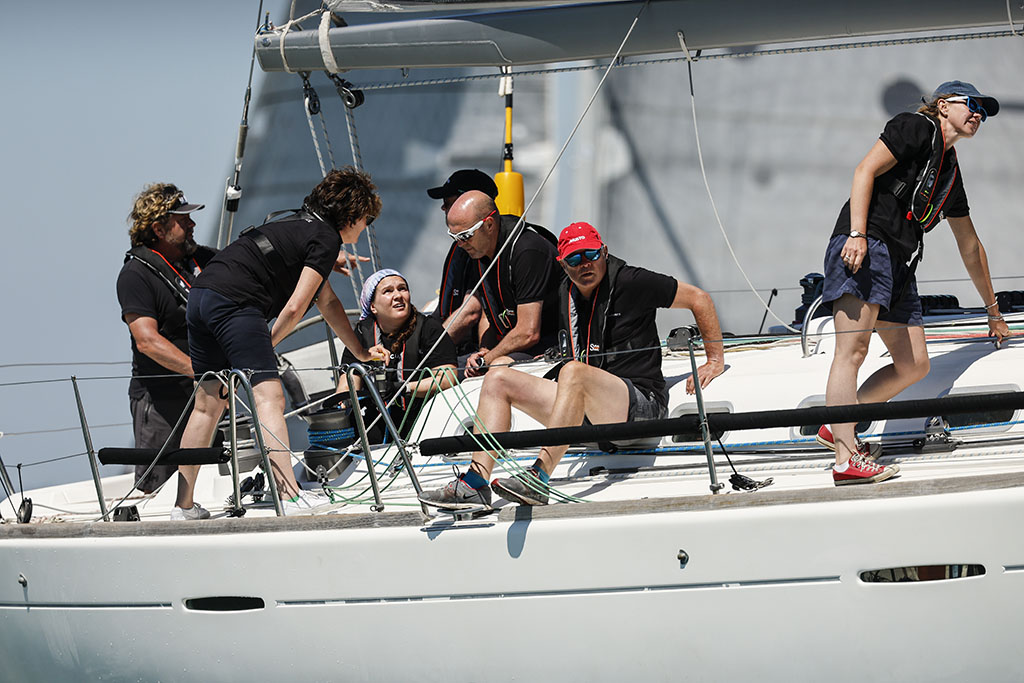
The Importance of Team Dynamics in Yachting
Effective team dynamics are essential in the yachting industry, where the combination of high-stakes environments and diverse skill sets creates a unique atmosphere. Every crew member plays a vital role, and their ability to collaborate can significantly impact the overall performance of the yacht. When teamwork flourishes, it leads to enhanced safety protocols, seamless service, and an enjoyable atmosphere for guests on board. Conversely, poor team dynamics can result in miscommunication, inefficiencies, and heightened stress levels, which may compromise both the crew’s well-being and the quality of the guest experience.
Moreover, a harmonious team dynamic fosters resilience. The yachting environment often presents unforeseen challenges, such as demanding guests, technical issues, or adverse weather conditions. When the crew works cohesively, they are more adept at problem-solving and supporting one another through difficult times. This solidarity not only enhances the onboard experience but also contributes to personal growth and professional development among team members. Building strong team dynamics ultimately leads to higher employee satisfaction and retention, as crew members feel more valued and engaged in their work.
Understanding the importance of team dynamics in yachting extends beyond the immediate crew; it also affects how the yacht is perceived by guests and the industry. A well-functioning team creates a positive atmosphere that reflects in the quality of service provided. Guests are likely to return and recommend the yacht to others when they experience excellent service delivered by a united and effective crew. In an industry where reputation can make or break a chartering business, nurturing strong team dynamics is paramount.
Understanding the Elements of Effective Team Dynamics
At the heart of effective team dynamics lie several key components: trust, communication, collaboration, and a shared vision. Trust forms the foundation upon which relationships are built; it allows crew members to rely on one another, knowing that each person will perform their duties to the best of their abilities. This trust is cultivated through open communication, where crew members feel comfortable sharing ideas, concerns, and feedback. When communication is clear and constructive, misunderstandings are minimized, and collaboration flourishes.
Collaboration is vital in the fast-paced world of yachting. Crew members must coordinate their efforts seamlessly, whether during daily operations or in response to unexpected challenges. A cohesive team is characterized by its ability to work together, leveraging individual strengths to achieve common goals. Having a shared vision for what success looks like further strengthens this collaboration. When crew members are aligned in their objectives, they are more likely to support each other and take initiative to contribute positively to the overall team dynamic.
Additionally, emotional intelligence plays a crucial role in effective team dynamics. Crew members who can recognize and manage their emotions, as well as empathize with others, create a more supportive and understanding work environment. This awareness can reduce conflict and facilitate better relationships among crew members. As the crew navigates the complexities of their roles, cultivating emotional intelligence helps them remain resilient, adaptable, and focused on delivering exceptional service.
Regular team-building activities can also enhance these core elements of team dynamics. These exercises not only strengthen relationships but also improve communication skills and foster a sense of camaraderie among crew members. Engaging in fun, low-pressure situations allows team members to connect on a personal level, breaking down barriers and encouraging a more supportive environment.
Challenges to Team Dynamics in a Yachting Environment
Despite the significance of strong team dynamics, yacht crews often encounter challenges that can hinder their effectiveness. One major obstacle is the high-pressure nature of the work. Crew members frequently work long hours in demanding conditions, needing to maintain a professional demeanor while delivering exceptional service to guests. This constant pressure can lead to stress, burnout, and interpersonal conflicts, negatively impacting team dynamics.
Furthermore, the diverse backgrounds and experiences of crew members can create communication barriers. When individuals come from different cultures or have varying levels of expertise, misunderstandings may arise. These communication challenges can disrupt workflow and lead to frustration among team members. In the absence of effective strategies to bridge these gaps, crew cohesion may suffer, resulting in decreased morale and productivity.
Isolation is another common issue faced by yacht crew members. Spending extended periods away from family and friends can lead to feelings of loneliness and disconnection. This isolation can adversely affect mental health and overall happiness, making it difficult for crew members to fully engage with their team. A lack of strong personal connections may further complicate communication and collaboration, reinforcing the need for initiatives that foster relationship-building among crew members.
Maintaining a healthy work-life balance poses additional challenges in the yachting industry. The demanding schedules often leave little time for personal activities or relaxation, which can lead to resentment and burnout. When crew members feel overwhelmed, it can strain relationships and hinder their ability to work together effectively. Finding ways to promote well-being and encourage self-care is essential for maintaining strong team dynamics.
Lastly, managing guest expectations can create pressure on crew members. Dealing with demanding clients requires a calm and professional approach, even in challenging situations. If crew members are unable to meet these expectations, it can lead to dissatisfaction and tension within the team. Ensuring that the crew feels supported and empowered to handle these challenges is vital for fostering a positive team dynamic.
Strategies to Enhance Team Dynamics
Improving team dynamics in a yachting environment requires intentional strategies that address the unique challenges faced by crew members. One effective approach is to prioritize communication training. By equipping crew members with the tools to communicate effectively, misunderstandings can be minimized, and collaboration can be enhanced. Regular workshops focused on active listening, conflict resolution, and assertive communication can contribute to a more harmonious onboard environment.
In addition to communication training, implementing regular team-building activities is crucial. These exercises can range from simple icebreakers to more involved workshops that focus on specific skills. Engaging in these activities helps crew members bond and fosters a sense of belonging. The positive impact of shared experiences often translates into improved teamwork and cooperation during day-to-day operations.
Another vital strategy is to encourage feedback within the team. Creating an environment where crew members feel safe to share their thoughts and concerns can lead to significant improvements in team dynamics. Regular check-ins and open discussions allow for constructive feedback, ensuring that everyone feels heard and valued. A culture of feedback promotes accountability and supports continuous growth among team members.
Leadership also plays a pivotal role in shaping team dynamics. Leaders must model positive behaviors, demonstrating empathy and understanding in their interactions. When leaders prioritize the well-being of their crew, it sends a powerful message that collaboration and support are valued. Additionally, leaders should be trained to recognize signs of stress or disconnection within the team, allowing them to intervene and provide support when necessary.
Promoting a culture of inclusivity is another essential element in enhancing team dynamics. Encouraging crew members to share their diverse perspectives and experiences fosters an environment where everyone feels valued. When crew members can bring their authentic selves to the workplace, it creates a more dynamic and engaged team. Celebrating cultural differences and promoting understanding can strengthen relationships and improve teamwork.
Lastly, emphasizing work-life balance is crucial in the yachting industry. Providing opportunities for crew members to recharge and enjoy leisure time is essential for maintaining a healthy and effective team dynamic. Scheduling regular breaks, promoting wellness initiatives, and encouraging personal time can all contribute to a more balanced and engaged crew.
The Role of Leadership in Shaping Team Dynamics
Leadership is a cornerstone of effective team dynamics, influencing how crew members interact and collaborate. A strong leader sets the tone for the team, establishing an environment of trust, respect, and support. By modeling positive behaviors and demonstrating a commitment to team well-being, leaders can inspire crew members to adopt similar values in their interactions.
Effective leaders possess strong emotional intelligence, allowing them to navigate the complexities of human relationships. They recognize the importance of understanding individual strengths and weaknesses, leveraging these insights to create a cohesive team. By fostering open communication and actively seeking feedback, leaders can ensure that crew members feel heard and valued.
Additionally, leaders play a crucial role in conflict resolution. When disagreements arise, a skilled leader can facilitate productive discussions that address issues without escalating tensions. By providing guidance and support, leaders can help crew members navigate challenges, reinforcing a culture of collaboration and mutual respect.
Empowering crew members is another essential aspect of effective leadership. By entrusting team members with responsibilities and encouraging them to take ownership of their roles, leaders can boost morale and motivation. This sense of ownership fosters accountability and commitment, ultimately leading to improved team dynamics and performance.
Leaders also have a responsibility to promote professional development among crew members. By encouraging ongoing training and skill enhancement, leaders can help individuals grow in their roles, contributing to overall team effectiveness. Providing opportunities for advancement not only benefits the individual but also strengthens the entire crew.
Lastly, celebrating successes—big and small—can significantly impact team dynamics. Leaders should recognize individual and team achievements, reinforcing a positive culture that values hard work and dedication. Acknowledgment and appreciation go a long way in fostering loyalty and enthusiasm within the crew, creating a more harmonious onboard atmosphere.
Assessing and Improving Team Dynamics
Regular assessment of team dynamics is vital for ensuring ongoing improvement and effectiveness. Crew members and leaders should engage in open discussions about their experiences, challenges, and successes. These discussions can help identify areas for growth and highlight effective practices that can be shared with the entire team.
Implementing anonymous surveys or feedback forms can provide valuable insights into crew members’ perceptions of team dynamics. This information allows leaders to pinpoint specific areas that may require attention, fostering an environment of continuous improvement. By actively seeking feedback and addressing concerns, leaders demonstrate their commitment to the well-being and effectiveness of the team.
Setting measurable goals for team dynamics can also guide improvement efforts. By establishing clear objectives, such as enhancing communication or fostering collaboration, the crew can work together to achieve specific outcomes. Regularly reviewing these goals ensures that the team remains focused and accountable, fostering a sense of shared purpose.
Reflection is a powerful tool for growth. Crew members should be encouraged to reflect on their experiences and consider how their actions impact team dynamics. This practice can promote self-awareness and encourage individuals to take ownership of their contributions to the team.
Lastly, celebrating progress is crucial in the journey toward improved team dynamics. Recognizing and acknowledging improvements, whether through team-building activities, successful operations, or positive feedback, reinforces the value of teamwork and collaboration. By fostering a culture of appreciation, crews can continue to strengthen their dynamics and achieve greater success in their yachting endeavors.



